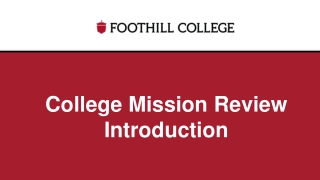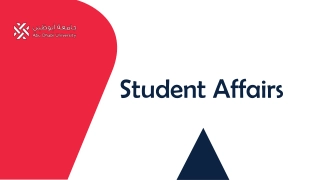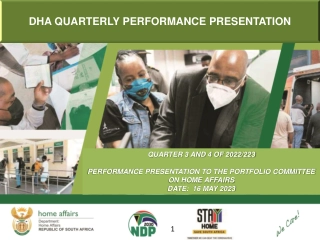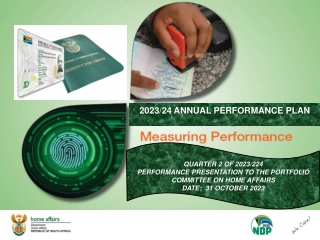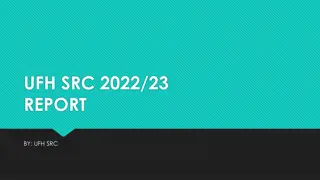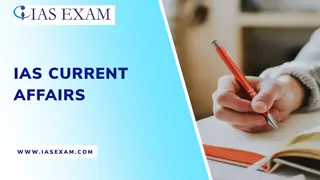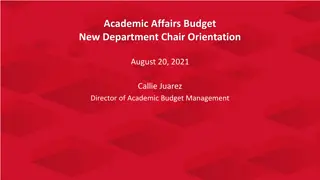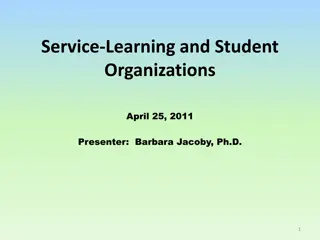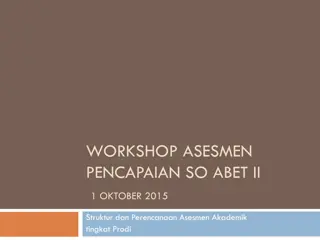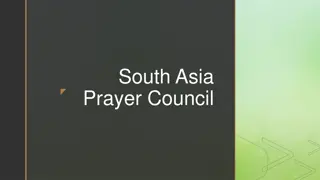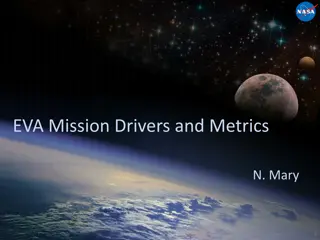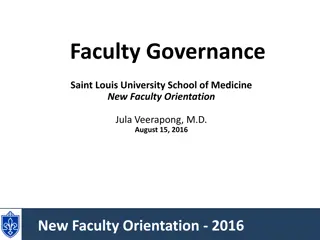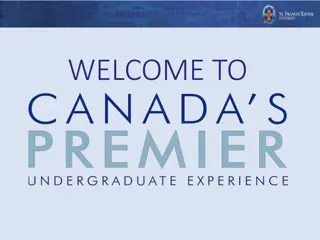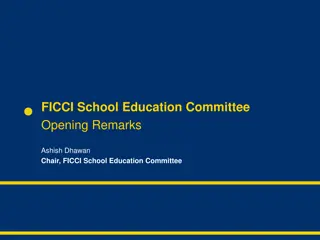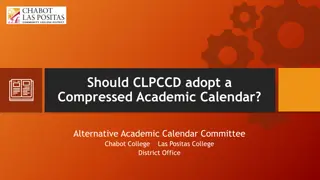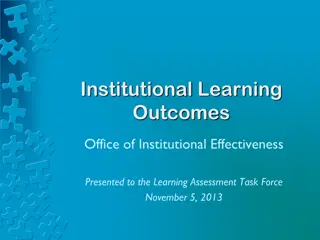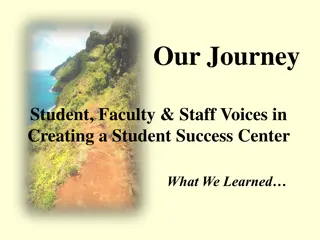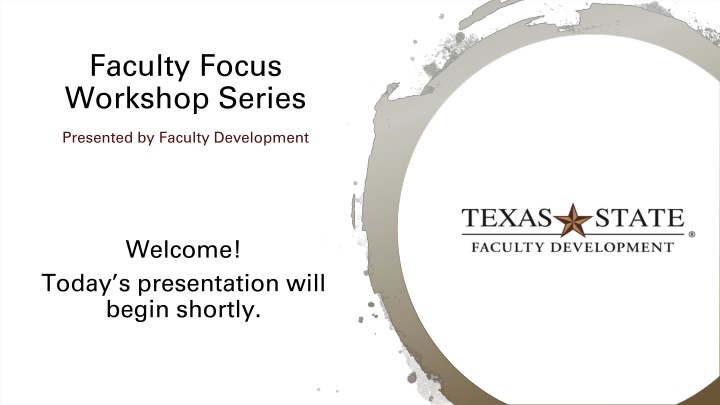
Developing Mission, Outcomes, and Methods for Student Improvement Assessment
Enhance your skills in assessing student outcomes and refining program missions with this workshop series. Explore techniques to evaluate achievement, find data sources, and align with institutional effectiveness standards.
Download Presentation

Please find below an Image/Link to download the presentation.
The content on the website is provided AS IS for your information and personal use only. It may not be sold, licensed, or shared on other websites without obtaining consent from the author. If you encounter any issues during the download, it is possible that the publisher has removed the file from their server.
You are allowed to download the files provided on this website for personal or commercial use, subject to the condition that they are used lawfully. All files are the property of their respective owners.
The content on the website is provided AS IS for your information and personal use only. It may not be sold, licensed, or shared on other websites without obtaining consent from the author.
E N D
Presentation Transcript
Faculty Focus Workshop Series Presented by Faculty Development Welcome! Today s presentation will begin shortly.
Developing Mission, Outcomes and Methods to Assess Student 1 Improvement Lon Olson, Ph.D. Director of Assessment lwo5@txstate.edu
Workshop Goals 2 To develop the knowledge and skills to: become more adept in the assessment of student outcomes and refine the mission of the program identify student outcomes appropriate to the mission of the program design appropriate methods to assess achievement of outcomes locate data sources to establish administrative outcomes, methods, and targets
SACSCOC Influence 3 Institutional Effectiveness Continuous Improvement 8.2 The institution identifies expected outcomes, assesses the extent to which it achieves these outcomes, and provides evidence of seeking improvement based on analysis of the results in the areas below: (Institutional Effectiveness) a. Student learning outcomes for each of its educational programs, (Student outcomes: educational programs) b. Student learning outcomes for collegiate-level general education competencies of its undergraduate degree programs, (Student outcomes: general education) c. Academic and student services that support student success. (Student outcomes: academic and student services
Expectations 4 In Fall - programs revisit Mission, Outcomes, and Method In Spring - programs report Results, Action Plans, and Evidence of Improvement
Mission Statement 5 A broad statement of what the program is, what it does, and for whom it does it A clear description of the purpose of the program and the environment that surrounds how students interact with the program Reflects how the program contributes to the education and careers of students impacted by the program Aligned with department, college, and university missions Distinctive for your program and the level of the program
Mission Statement Components 6 Primary functions or activities of the program most important functions, operations, outcomes, and/or offerings of your program Purpose of the program the primary reasons why you perform your major activities or operations Stakeholders groups or individuals that participate in the program and those that will benefit from the program
Mission Statement Example 7 Counseling Center The Texas State Counseling Center provides high quality mental health services to promote the overall well-being, retention, and success of our diverse student population. As part of our role in higher education, the Counseling Center also contributes to the advancement of the mental health field through the training of new professionals. Our work is guided by ethics, professional standards, and respect for diversity
Mission Statement Example 8 Writing Center The mission of the Texas State University Writing Center is to develop Bobcats by helping them use writing as an intellectual activity integral to productivity in scholarly, civic, professional, and cultural lives. Through workshops, writing activities, and individualized appointments, accomplished peer consultants support writers from across the disciplines students (freshman to doctoral), staff, and faculty at any stage of the writing process in a variety of genres.
Checklist for Mission Statement 9 Is it distinctive, specific to the program, and at the appropriate level? Does it clearly state the core purpose of the program? Does it indicate the primary function or activities of the program? Does it indicate who the stakeholders are? Does it clearly support the department s, college s, and university s missions? Is it appropriate for the level of the program? Is the statement brief and memorable?
Outcomes 10 Aligned to mission and goal statements Clearly describe expected abilities, knowledge, values, and attitudes of those impacted by the program Stated so that a single method can be used to measure Written so that more than one measurement method can be used Focus on the learning or administrative results and not the process Measurable and there are resources available Can be used to identify areas to improve
Outcome Requirements 11 Academic and Student Services Programs: A minimum of three outcomes for each program Outcomes should be student centered, based on what students will be able to do because of the program, not what the program will do to or for them Two methods identified to assess each outcome
Student Learning Outcomes 12 Describe specific knowledge and skills that a student should demonstrate as a result of their interaction with the program. Focus on the intended abilities, knowledge, values, and attitudes three questions What does the student know? (cognitive) What can the student do? (psychomotor) What does the student care about? (affective)
Student Learning Outcomes Examples 13 Counseling Center: Students who receive counseling at the Counseling Center will report decreased symptoms of depression. Distance Learning Students who enroll in self-paced correspondence courses successfully complete those courses for academic credit in a timely manner.
Checklist for Outcomes 14 Are the outcomes aligned with the mission, vision, values, and goals? Do outcomes focus on issues important to the level of the program? Do outcomes reflect learning through the (required) program curriculum? Is it possible to collect accurate and reliable data for each outcome? Do outcomes describe the knowledge abilities, values, and/or attitudes students graduating from the program are expected to demonstrate? Are they stated so that it is possible to use a single method to assess the outcome? Are they stated so that more than one assessment method can be used? Can they be used to identify areas to improve? Are they stated in clear and precise language?
Methods and Measures 15 Should provide an objective means of measuring the extent to which students achieve the outcome and the efficiency or productivity of course and related activities Provide multiple (at least two) ways to measure each outcome Should indicate how and when you will assess each outcome Preferably should be indicated through direct methods Indicate a preferred target of attainment
Method Descriptions 16 What are you going to use? presentation, assignment, test, survey, observation, performance rating Of and/or by whom? Student, supervisor, focus group Context (e.g., where or when)? mid-semester, end of program For what purpose? desired learning outcome To what extent? hard targets, year to date attainment, or comparison to other programs in department, school, or college example:Test (essay) the students at the midpoint of the course for their level of knowledge in XYZ. Students are expected to score 85 percent or higher.
Methods Example student learning 17 Office of Distance Learning Student completion rates will be compiled from student records in the course database on May 30 annually. Student completion rates within the period provided for established course duration (either nine or six months) will increase by 2 percent annually. Counseling Center Student clients complete the CCAPS-62 during their first visit to the Counseling Center and then complete repeated assessments using the briefer CCAPS-34 every three to four sessions. Both versions of the CCAPS include a critical item that tracks client-reported suicidal ideation on a rating scale of zero to four. Our goal is that students will reduce their reported level of suicidal ideation, with at least 50 percent reporting an absence of suicidal ideation (rating of 0) on their last assessment.
Data for Administrative Outcomes 18 Data may be obtained from Institutional Research CatStats (only available from on-campus) https://catstats.txstate.edu/ Self-Service Tools on the Institutional Research Website http://www.ir.txstate.edu/ir-self-service/self-service Contact Institutional Research JCK 883 512-245-2386 ir@txstate.edu
Checklist on Methods 19 Does the method describe who, how when, where and what will be assessed? Is assessment derived from required components of the curriculum? Have clear performance targets been identified? Are the data reasonably easy to collect or access within the year? Does the method build on existing data? Are students motivated? Is the information directly controllable by the program? Can subcomponents of a measurement be identified to allow deeper analysis? Does method focus on direct measures?
Overall Considerations 20 Is the plan written in terms that are understandable to someone outside of the field or institution? Are outcomes, methods, and targets stated simply, consistently and clearly? Do learning outcomes focus on learning rather than grades, attendance, participation or other activities? Is there a link between the mission, outcomes, and methods? How will findings be reported? Is there enough information in the methods to clearly analyze and report results? Do results need to be disaggregated for mode or location of delivery? Will you be able to develop an action plan if results don t meet the target?
Outcomes Assessment Resources 21 Outcomes Assessment Website with Process Information http://www.avpie.txstate.edu/assessment/outcomes-assessment.html Outcomes Assessment Data Repository for Entering or Reviewing Reports https://tim.txstate.edu/sacsoutcomes/ CatStats (only available from on-campus) https://catstats.txstate.edu/ Self-Service Tools on the Institutional Research Website http://www.ir.txstate.edu/ir-self-service/self-service
Contacts 22 Lon Olson, Director of Assessment 1016 JCKellam 512-245-8114 lwo5@txstate.edu Ismael Lozano, Administrative Assistant, Institutional Research 883 JCKellam 512-245-2386 gt05@txstate.edu

